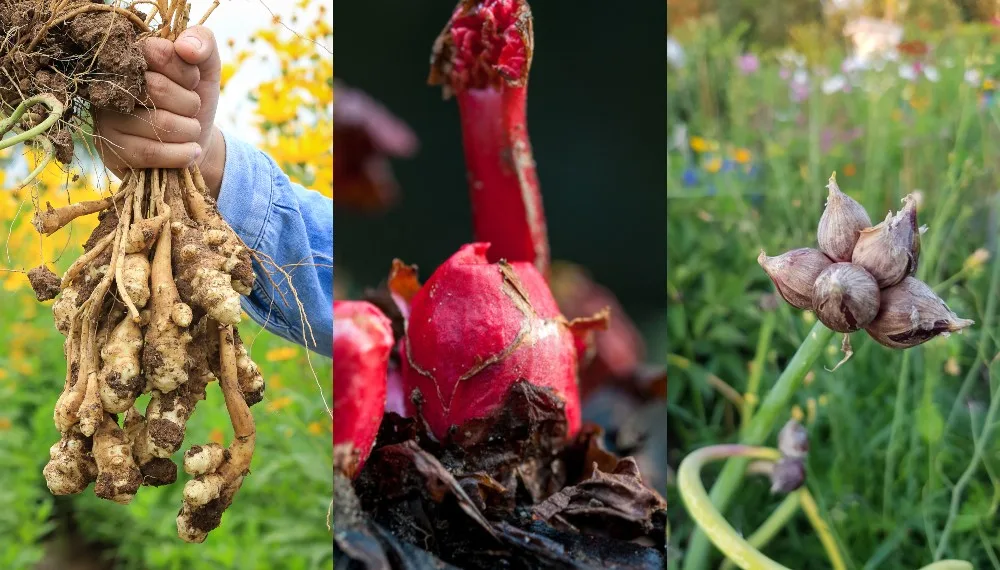
Perennials are more than just beautiful and useful landscape plants – they are the future of a sustainable food supply. Likely you have already come to that important realization – it could be the very reason why you are here today.
Yet, one always has more learning to do and more self-reliant skills to acquire.
In an optimistic effort to learn more about what kinds of perennials you can plant in your garden, for the sake of food security, beauty and diversity, you may have already come across this article: 18 Perennial Veggies You Can Plant Once and Harvest for Years.
What it doesn’t give you, however, is when those perennials might like to be planted.
A rule of (green) thumb for planting perennials
It is common knowledge that the planting of perennials is best done in cooler weather, either spring or fall, and that planting in summer is to ensure suffering (even death) of the plant.
Given my history in landscaping and nursery management, I can concur about planting in cooler weather being the best option, however, planting perennials outside of those times work too. Yes, even in summer.
Of course, you won’t want to be planting bare-root fruit trees in the heat, nor is it wise to divide and replant a freshly dug plant, all the while hoping for the best.
To prevent “replantation shock”, opt for those perennials that have been growing in containers for quite some time. Since the roots have not been recently cut, they will encounter less stress when planted in a new location. This is not to say that the leaves will not wilt, or die back, they may do just that. But the chance of survival is still great, especially when you take the following summer planting tips into consideration:
- dig the hole 2x deeper and wider than the pot or container
- fill the hole entirely with water before planting, letting it drain first to moisten the soil all the way around
- gently loosen the roots with your hands
- use quality soil, mixed with compost when planting
- remove any air pockets by stepping gently on the soil around the plant
- and of course, water, water, water
Knowing when to water – and how much to water – will always come to your advantage when planting anything new in the garden.
Advantages of planting perennials
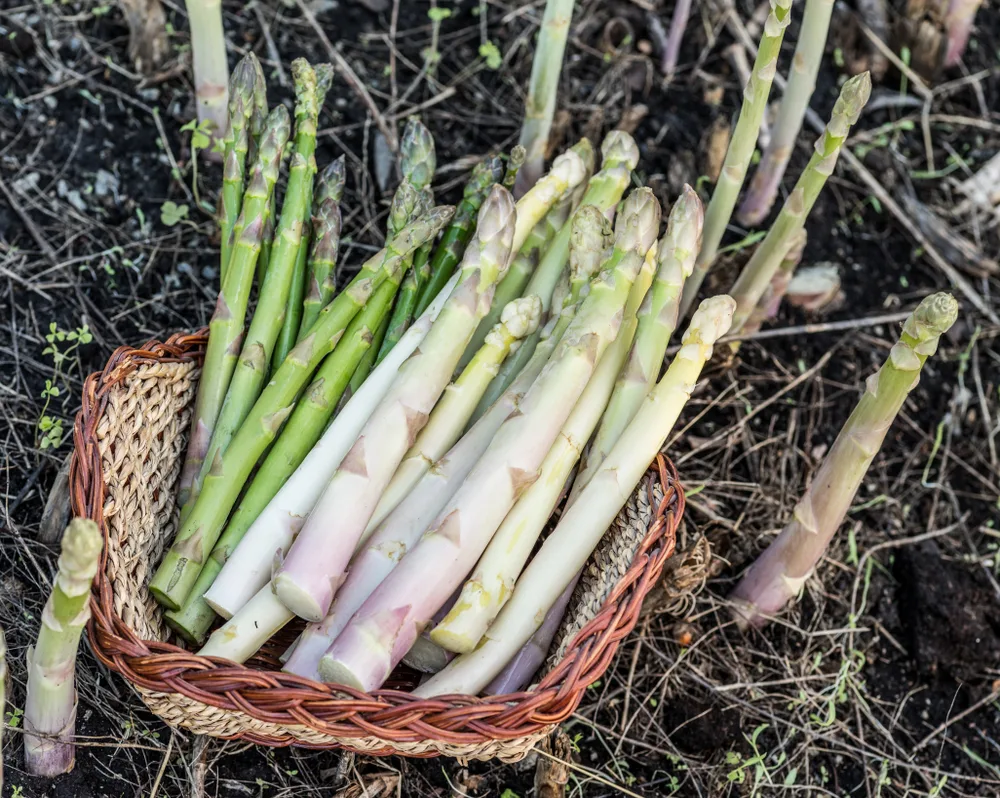
I’ve said it before, and I’ll say it again, perennials are an amazing food source! And may just be a cause for eating less annuals…
When you think there is nothing at all to eat, just look down and note what is green. Then make the distinction between the edible and non-edible wild plants.
With some basic foraging knowledge it is easier than you think to find food, and tastier than you can imagine.
Instead of relying so heavily on annual grains such as wheat, rice and corn to fill our appetites, what if we opted for nutritious perennials instead, including “weeds” when and where possible.
Think about how many perennials you regularly consume in your diet right now.
Could you be doing better at eating more? Or are you unsure of how to include them in your daily meals?
If you aren’t yet convinced that perennials are a right fit for your garden and lifestyle, at the same time focusing on principles of sustainable agriculture, consider the following four reasons why it makes perfect sense to grow perennials in your own backyard.
Perennials are low-maintenance
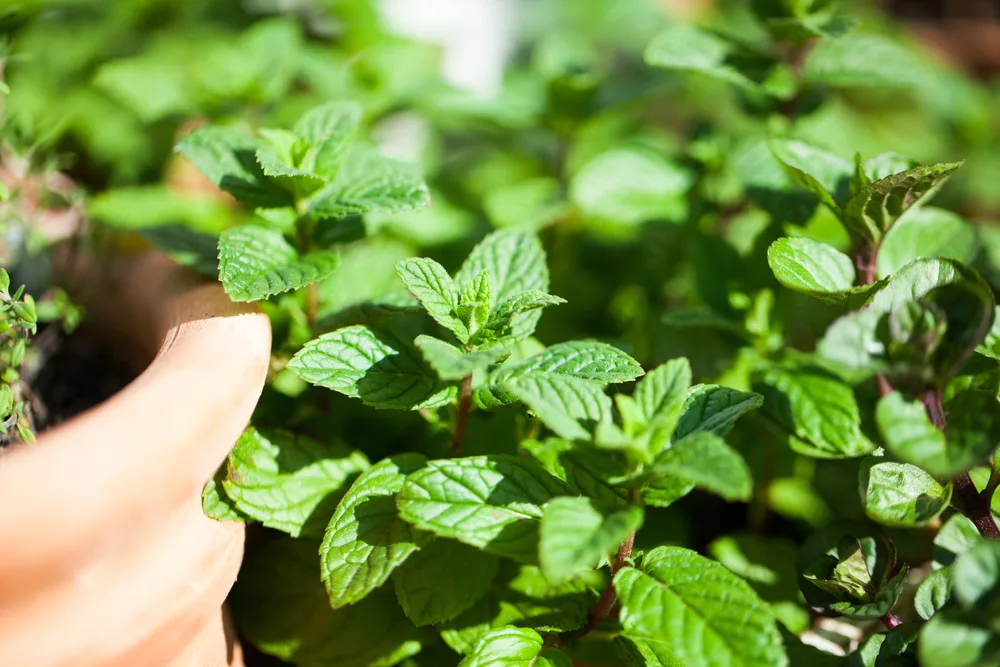
What could be better than a low-maintenance, edible plant?
One that requires little water (think drought), that produces year after year with minimal input, and is resistant to many common diseases and pests.
To grow edible perennials also uses little to no chemicals or fertilizer. If they are allowed to drop their leaves and fruits onto the ground, they are self-fertilizing.
While you cannot expect the same harvest every year, most years will provide you with something good to eat. And the more perennials you have, the more your chances of success continue to grow.
Keep an eye on the perennials that exist around you, and watch how they adapt to our changing climate, year after year. They are remaining strong, while some annuals begin to suffer from hotter days and warmer winters.
Extend your growing season
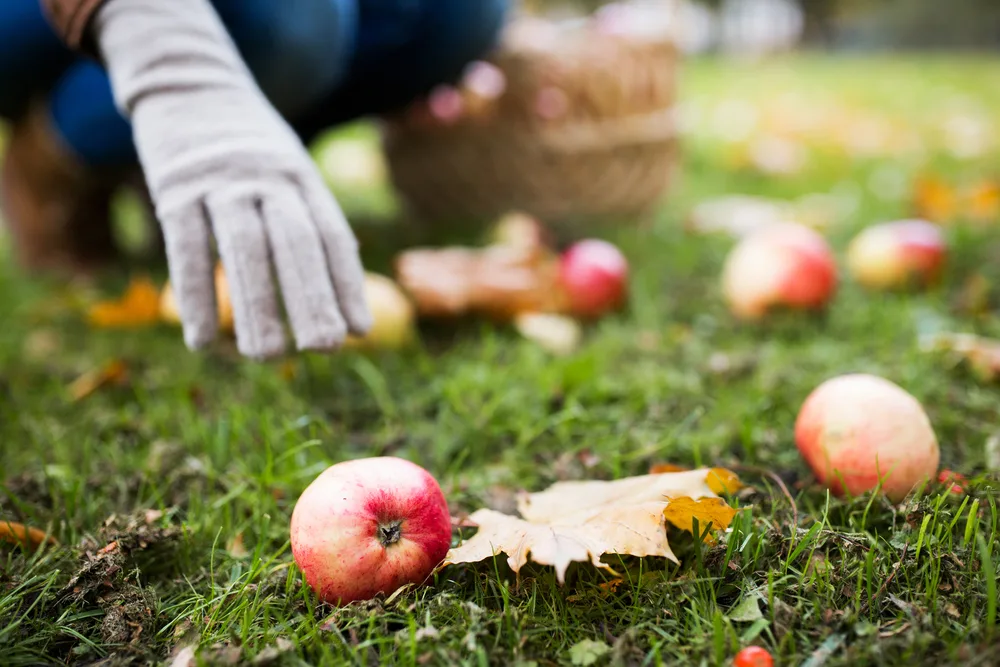
One of the best things about perennials is that their harvests overlap far greater than most annuals do. Wild garlic is harvested long before other garden greens are ready, apples and pears are harvested long after melons in the garden. Plus, you don’t have to eat, or preserve, everything all at once.
Of course, there is nothing wrong with growing annuals and perennials in the same garden, just make sure it is a permanent one, so as not to disturb the perennial roots.
Perennials improve the soil
The less you dig the soil, or rather, the more you leave it intact, your soil quality will only improve for the better.
Perennials are only dug up when they are to be moved, otherwise, it is best to plant them and let them be where they stand for years to come. Naturally, there are some exceptions, but this is the general rule to follow.
The roots of perennials extend far deeper into the ground as well, which helps with erosion control, as much as it makes the plants hardier and more drought-tolerant than annuals. Because the roots dive deep into the soil, they are also able to bring up essential nutrients from underground.
The beauty of diversity
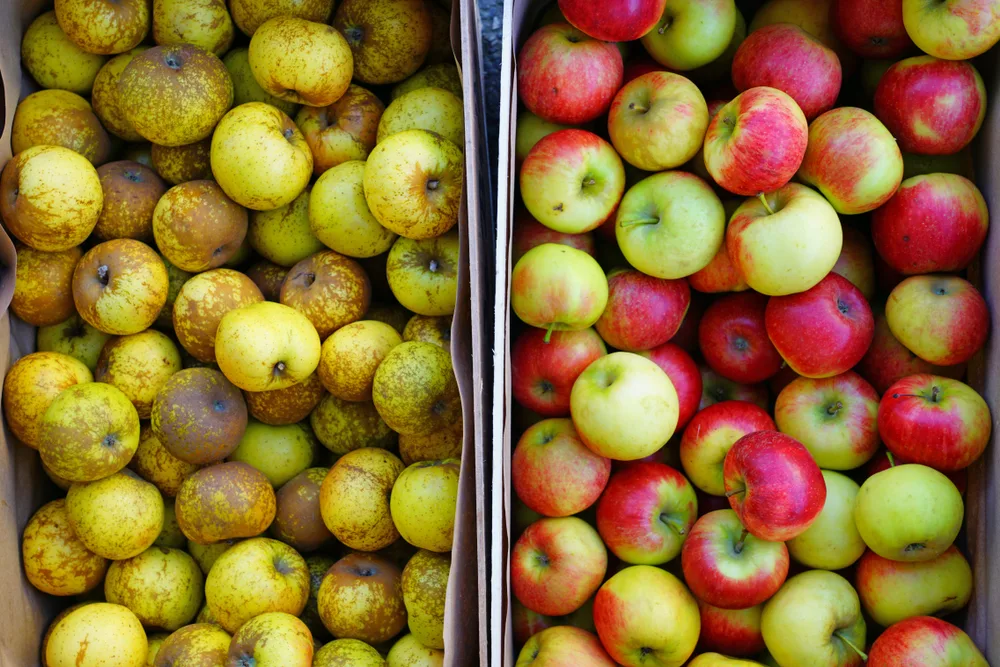
Diversity is a beautiful thing – just ask nature. Without it, life would be pretty boring indeed. Less to look at, less variety to eat, less of the things that really make us smile.
Again, consider your own diet. Think about how many varieties of apples you have eaten in your entire life. For the average person this number is probably less than 10, not more than 20. Consider for a moment that there are more than 7,500 apple cultivars in the world. Are you missing out?
Perhaps that is reason enough to plant an heirloom apple tree this fall.
Edible perennials to plant in fall
With the days growing shorter and the nights becoming cooler, one can only assume that autumn will be here soon.
Even at the end of August, the leaves on our cherry trees are already turning beautiful shades of golden yellow. This, combined with the delectable aroma of ripe apples and pears drifting in through the open window can only mean one thing – fall planting is near.
Living in the mountains means that our fall comes sooner than in other parts of the world. We have already planted some potted rhubarb into our garden (which is currently thriving) and are planning to plant a few more fruit trees when the time comes. First, we need to harvest what we have, as we are soon ready to make applesauce and apple cider vinegar.
Homemade apple cider? That is a story for next year.
What perennials are you thinking about planting this fall?
Here are 10 to choose from:
1. Asparagus – Asparagus officinalis
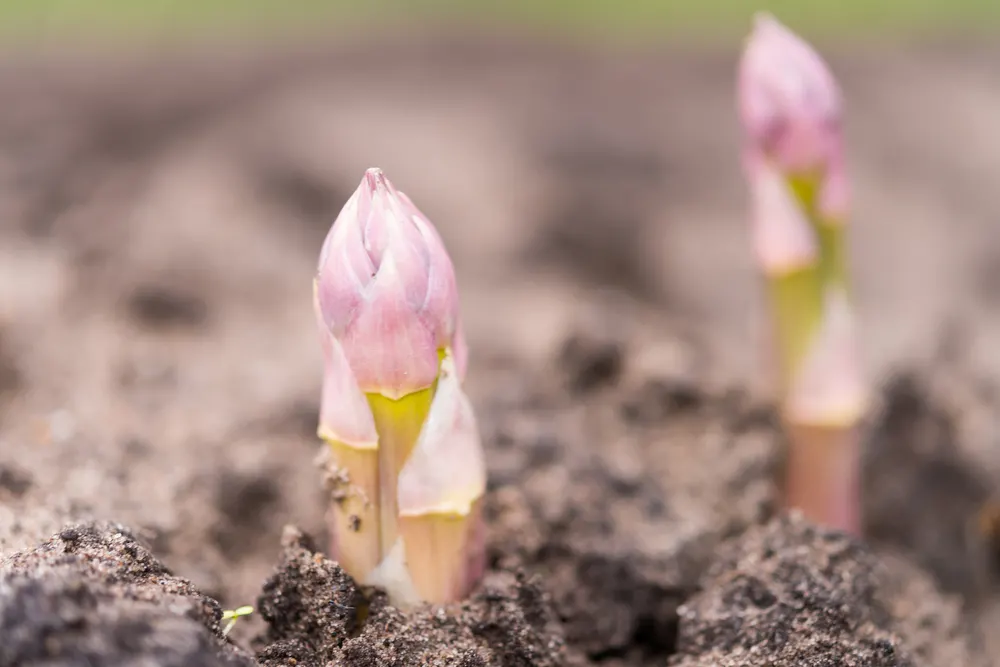
After the first frost and before the soil freezes – that is the best time to fall plant asparagus.
While you can save money and plant asparagus from seed, know that it is an energy intensive and time-consuming way to get started.
A faster way to get that homegrown asparagus on your plate, yet still slow by modern expectations, is to plant asparagus crowns. Even those require patience, for it takes three growing seasons until you get to harvest for the first time!
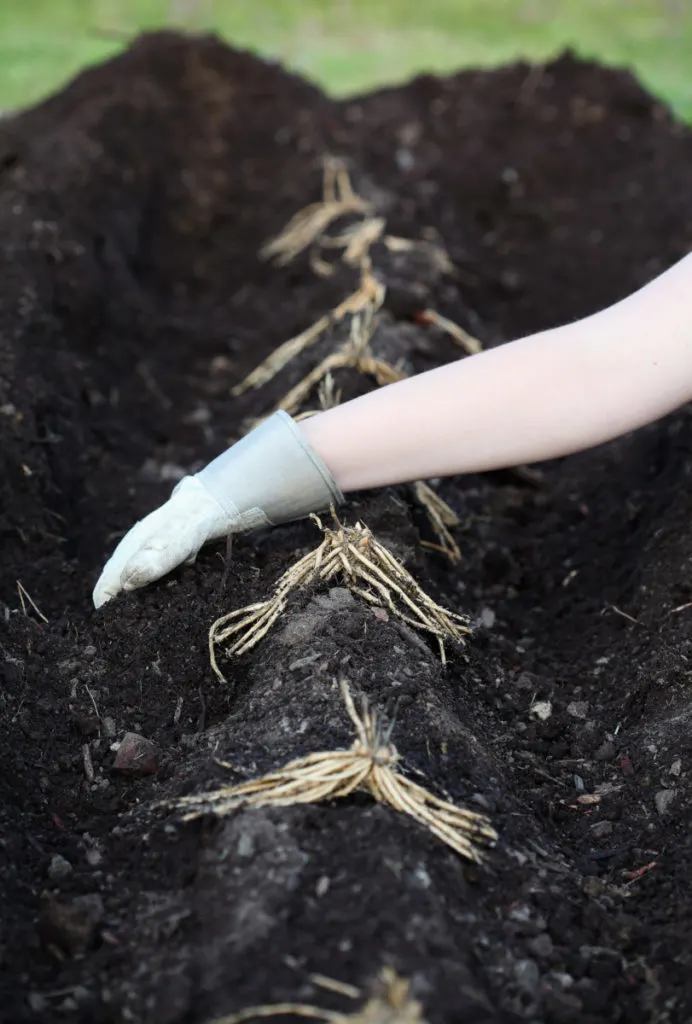
A few good reasons to grow asparagus:
- asparagus is best when freshly harvested (right from your backyard!)
- it complements other spring vegetables you have growing in your garden, such as peas, potatoes and garlic
- asparagus is full of nutrients, including folate, chromium, vitamins A, C, E and K
- it is chock full of antioxidants – which may help reduce inflammation
- boost your brain power and function
- asparagus is a natural diuretic
Plus, if you are into eating your colors, you get to choose between green, white or purple asparagus.
If you have a sunny spot with well-draining soil, asparagus may just be the perennial for you, provided that you enjoy eating it of course.
Read Next: How To Plant A New Asparagus Bed
2. Daylilies – Hemerocallis fulva
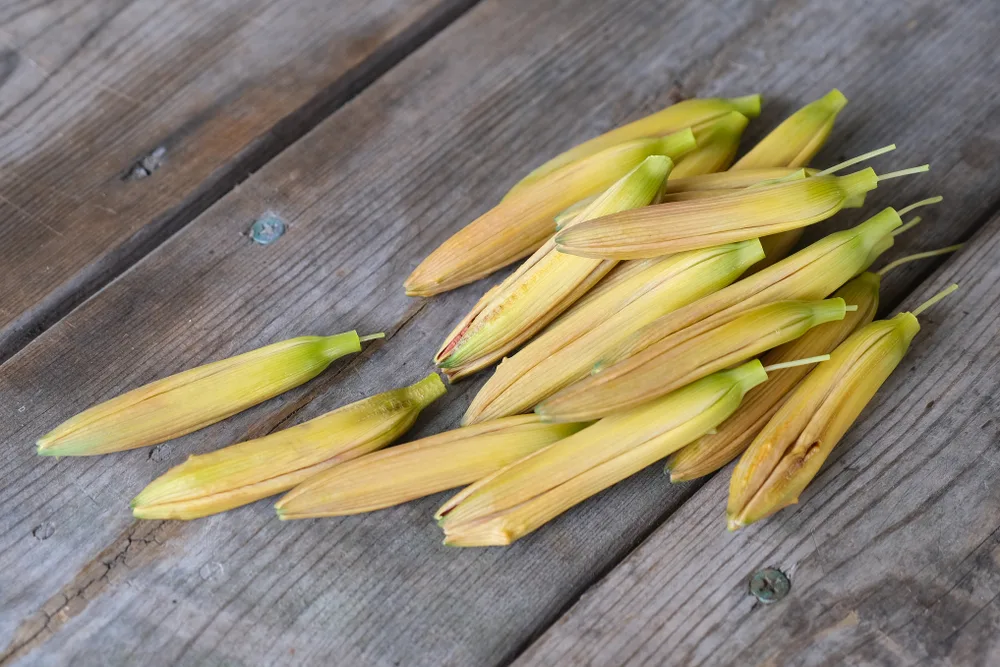
You may be thinking, “Daylilies, really? Are they even edible?”
Daylilies are in fact edible, some people even think they taste splendid.
The daylily is native to Asia, and has long been used in culinary preparations in China, Korea and Japan. They are often used in hot and sour soup, daylily soup and served as daylily flower fritters. You can even buy dried daylily flowers at some Asian food stores.
And then comes the disclaimer:
We must quickly address the edibility issue before you run out wildly to the garden with hopes of bringing in a bouquet of flowers for lunch, that eating daylilies isn’t for everyone. Some people experience negative side effects such as nausea, stomach ache and diarrhea, often when eating them raw. Always be sure to properly identify any and every plant before consuming it, and be aware that within the Hemerocallis genus there are literally thousands of cultivars – which may be very different than what is regularly consumed in the far East.
Always trust your gut instinct. If you would rather pass on this one, there are eight more trusted perennials to follow, with many options for berries and tree fruits.
In any case, it is about time we got over the fear, or apprehension, of eating flowers.
Do your own research on this bemusing perennial, because you will often find it on a list of edible perennials, including those that are planted in fall. When it doubt, start with nibbling on some nasturtium flowers and leaves first. They are annuals, and they are absolutely wonderful!
3. Jerusalem artichokes – Helianthus tuberosus
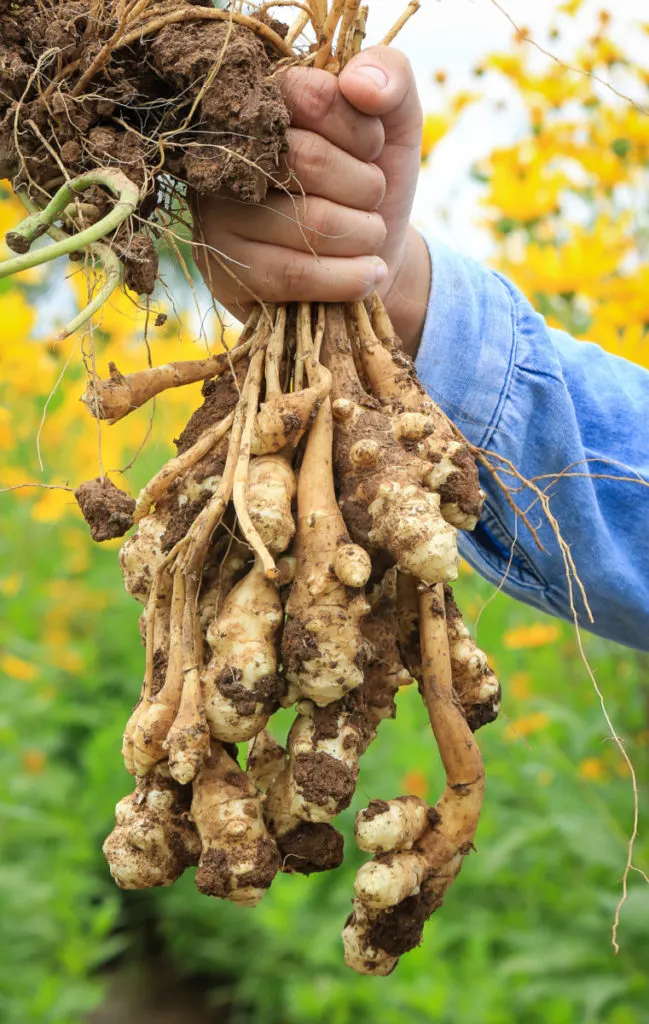
Jerusalem artichokes, otherwise known as sunchokes, are starchy, strange-shaped tubers that are similar to potatoes, only they are nutty and sweet.
We grew them for several years, and stored them in the ground for fresh harvesting throughout the winter, so long as the soil never completely froze (the ground was covered with a thick layer of mulch).
Sunchokes are so easy to grow, they need little input from you. As far as soil is concerned, they will grow anywhere they have space. Once you have an established bed of Jerusalem artichokes, you can even leave them in the soil to keep regrowing.
Every few years, you will need to dig them all up, replanting only the largest, less knobby pieces, otherwise they will start to get congested, both above and below the ground.
Read more about growing Jerusalem artichokes here.
4. Rhubarb – Rheum rhabarbarum
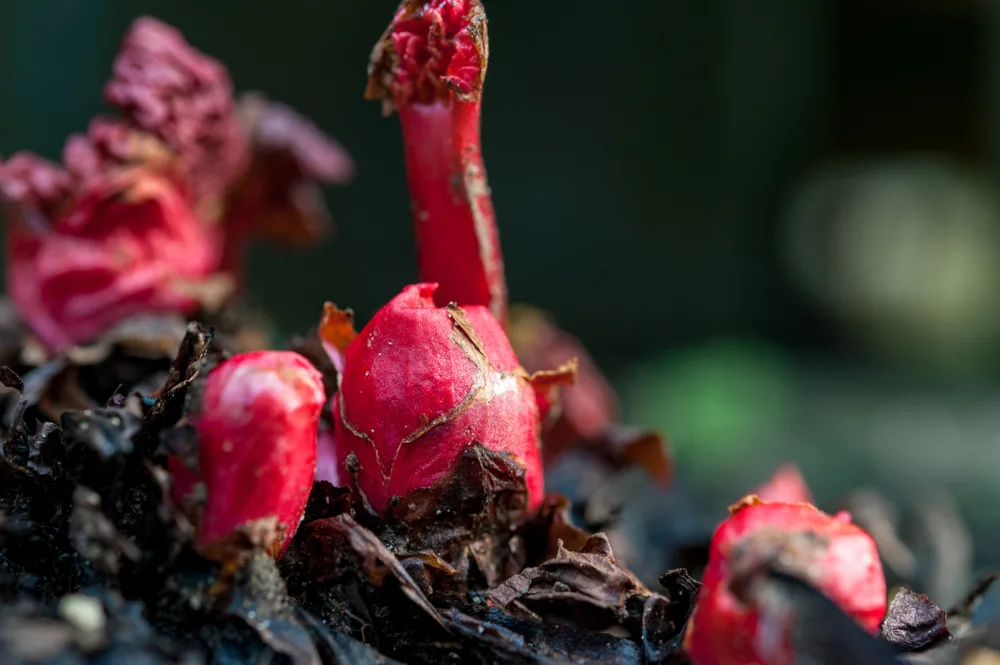
Rhubarb (a gorgeous cold-weather plant) is one of those perennials that is a must in our garden. It goes in everything from jams to chutney and, of course, the occasional rhubarb pie or crumble.
So long as the summers are not too hot, or too dry, one can always count on it as a generous foodstuff. It grows well in full sun, yet will also tolerate partial shade. One thing is for sure, it doesn’t like to be moved often, so choose its location wisely, knowing just how large it can get.
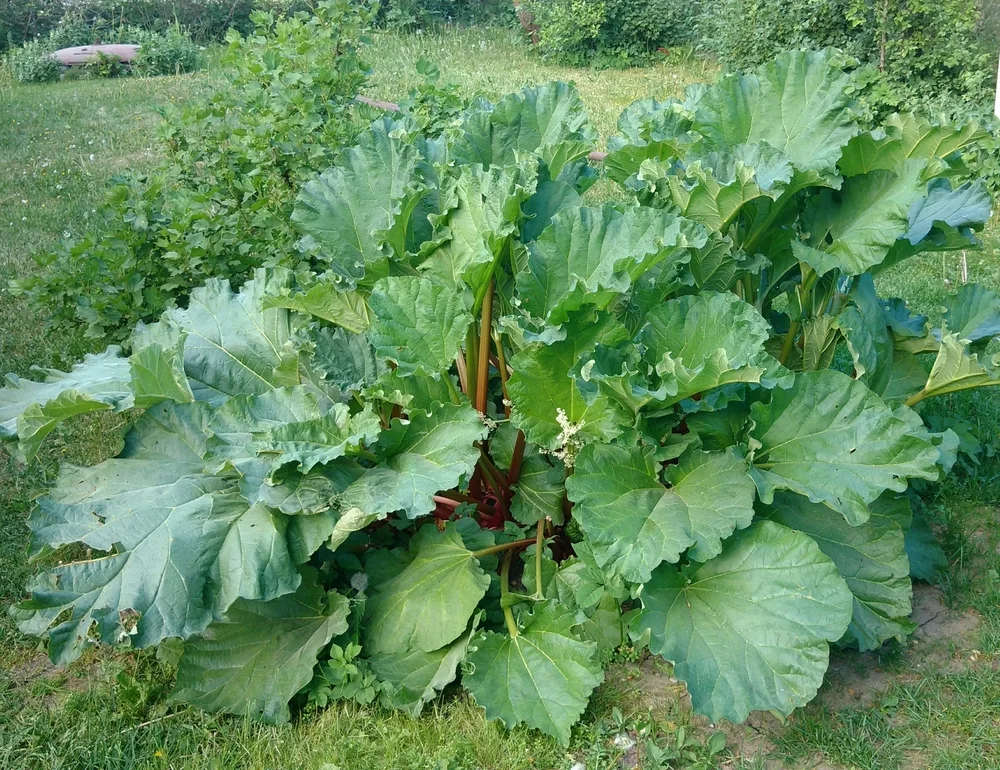
We’ve tried growing rhubarb from seeds more than once, because we had heard that it is possible. It wasn’t a rewarding experience.
Dividing and transplanting rhubarb crowns is definitely the way to go. This garden chore only needs to be done infrequently (every 5-10 years or so), making rhubarb a self-sufficient plant that requires very little maintenance.
Not entirely sure how to propagate your rhubarb? This article explains how to divide the crowns when the plants are dormant.
As with asparagus, you will need to muster up some patience in planting rhubarb and waiting for that first harvest. Two years after planting is a good harvest date to shoot for. After that, you really deserve that rhubarb pie – and all the other brilliant rhubarb recipes that you can try!
Read Next: How To Grow Rhubarb: The Perennial That Produces For Decades
5. Walking onions – Allium × proliferum
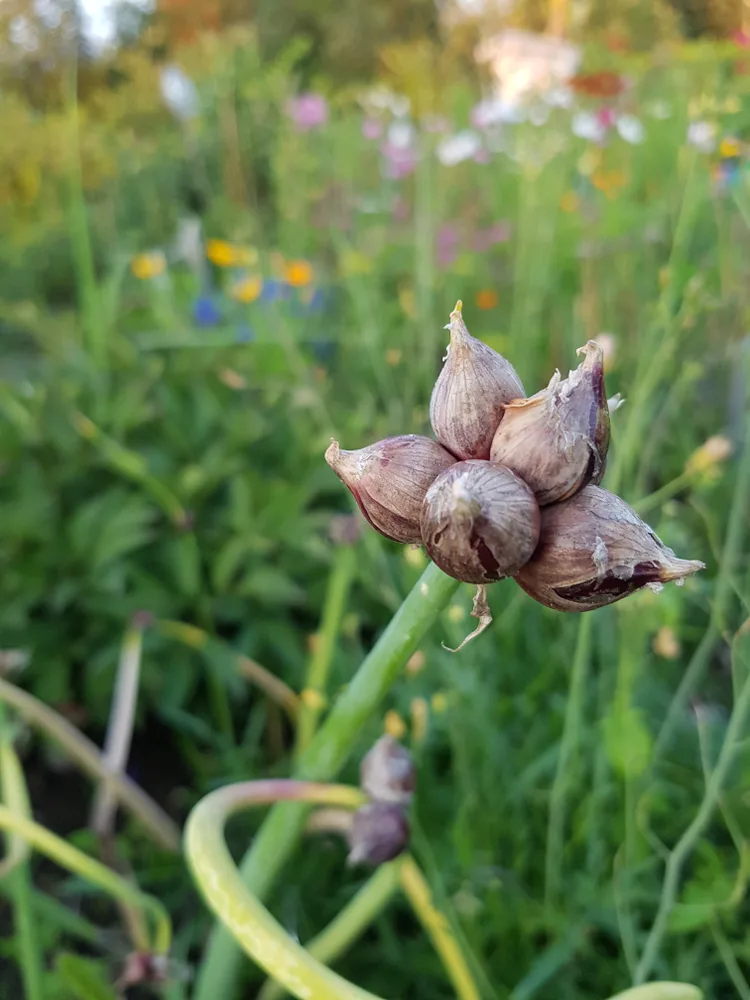
Egyptian walking onions (hardy in planting zones 3-10) can be propagated either by bulb division, or by planting the topsets (clusters of bulbils).
As the onions grow taller and produce these topsets, where flowers and seeds would normally be, they then fall over from their own weight and start to “walk” across the garden. Wherever the bulbils “step”, they will replant themselves, increasing the ground cover quickly and swiftly.
If you have never tried to grow them in your garden before, embrace the chance this fall to get them started.
As a perennial, Egyptian walking onions basically grow on their own, allowing you to harvest fresh green onions throughout the summer. The bulbils can also be eaten, if you are not replanting them to grow even more walking onions.
Walking onions aren’t particularly choosy about where they grow, though they do prefer full sun if they can get it, partial shade if that is what you have.
Egyptian walking onions are wonderful, because they can be planted anywhere from raised beds to containers, from food forests to edible landscapes.
Surely they can walk into your garden as well?!
Read more about how to grow them:
Growing Egyptian Walking Onions: How to Plant, Grow, and Harvest These Unique Onions @ Morning Chores
6. Salad burnet – Sanguisorba minor
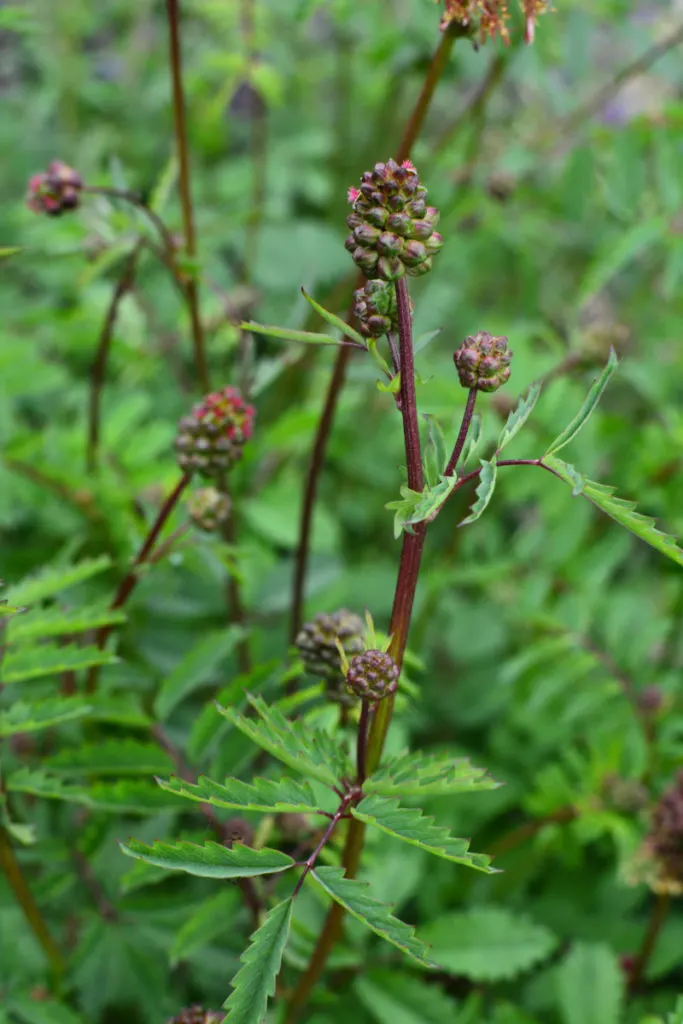
Here is one plant that not too many people have heard of, let alone have growing in their garden.
Salad burnet, a hardy, evergreen perennial, grows best in planting zones 4-8. The good news is that it is cold hardy down to -30° F. Better yet, it makes an excellent ground cover that can help to stabilize the soil on small slopes, as well as being a tough plant that builds soil fertility.
All the while providing you with fresh salad material.
What does it taste like? Salad burnet has a flavor reminiscent to cucumbers and the leaves can be used in salads, or as a tasty bite on sandwiches. The young leaves can be finely chopped and added to homemade butter, the leaves can be tossed into scrambles or skillet meals and they can even be used to flavor lemonade.
Once you have an established patch of salad burnet it will readily self-seed. In the meantime, fall is a great time to divide the clumps.
Finding them locally, however, may take a bit of investigative work.
Here is one online source to find salad burnet seeds.
7. Saffron crocus – Crocus sativus
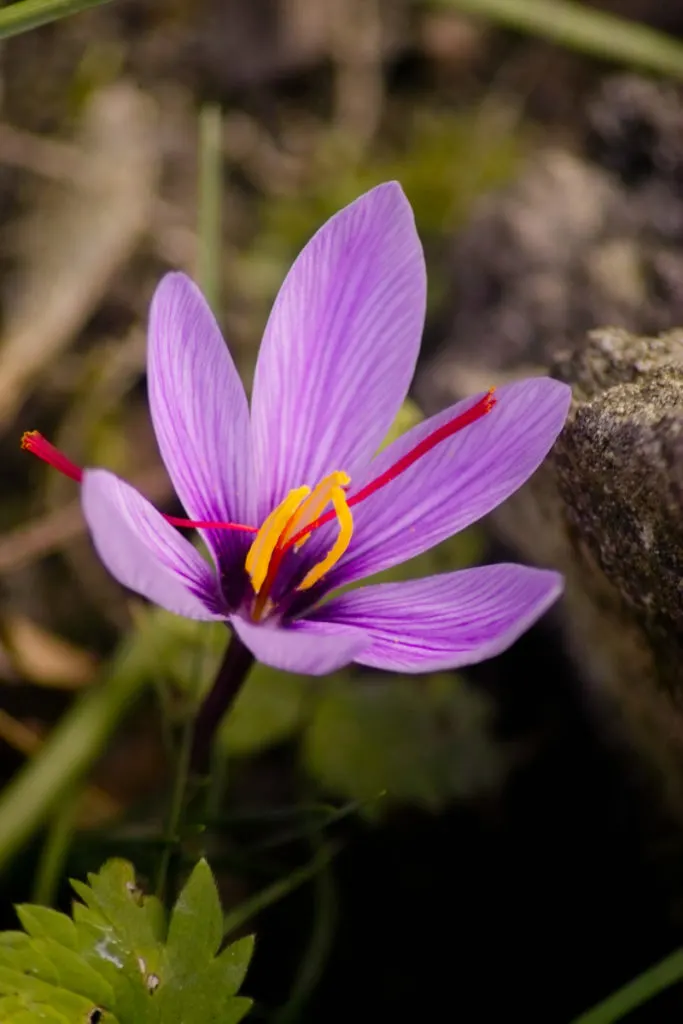
Rather then growing a source of food to fill your belly, how about something extra special to spice up your life? Or at least a novel herb to add to your rice, pork chops or paella?
Saffron is one of the most expensive spices in the world, due to the fact that it is so labor intensive to harvest.
The flowers should be harvested by hand in fall, and the part that is useful/edible are the three red stigmas (female part of the flower). Yep, that’s it. Just 3 little red fragrant threads from each flower.
Combine harvesting before the most intense sunlight of the day along with a low yield, and you will readily understand why it is so expensive.
As with eating hop shoots, another perennial and the world’s most expensive vegetable, you will discover that eating is not just about filling ourselves with calories. Eating well should also include elements of joy and enchantment.
Planting saffron crocuses in your landscape can give you this, so long as you are willing to do the work of planting, tending and harvesting.
Saffron crocus bulbs appreciate full sun in well-draining soil and they are ready to be planted in fall.
Do you have space in your garden or yard for 50 bulbs or more?
Here is more Information On How to Grow Saffron Crocus Bulbs @ Gardening Know How
8. Stinging nettle – Urtica dioica
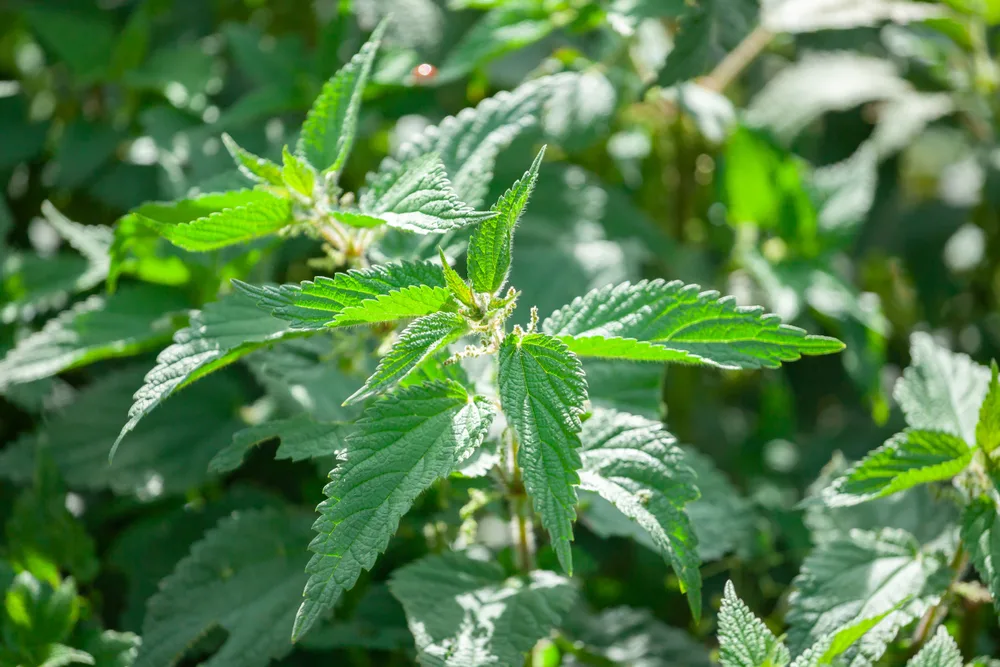
Stinging nettle can be a very prickly topic indeed. Some people consider nettles as food and medicine, whereas others view them as harmful weeds to eradicate from their yards.
Yet, history shows us that nettles have been spun and woven into cloth for more than 3,000 years. One can only assume that the nettle leaves were eaten as well, considering that nettles are basically food for free – and they emerge reliably year after year. It is a green vegetable that you can count on for an early spring harvest, if you know how to prepare it properly.
Once you have an established patch of nettles near the edge of your garden (they prefer moist, fertile soil with plenty of compost), it doesn’t take much work to maintain them, as they spread by underground stems called rhizomes. Nettle can also be started from seed.
Harvesting nettle rhizomes is a far easier way of propagating it though.
In fall, cut the plants back to about 10″ and dig them up roots and all, being sure to wear some leather gloves. Transplant them near the edge of your garden, in an out-of-the-way area that provides either full sun or partial shade, and be sure to mulch them well.
Nettles grow so strong and fast, that you will even be able to harvest them the following spring.
If a plant has grown this well for thousands of years, let’s just say it is a keeper. Learn to respect it, and it can provide you with all the essential vitamins and minerals you need, including iron, calcium, vitamins A and C as well as several B vitamins.
If you are seeking allergy relief from hay fever, a strong nettle infusion may be able to help with that too.
9. Berry canes and bushes – Rubus, Ribes, Vaccinium spp.
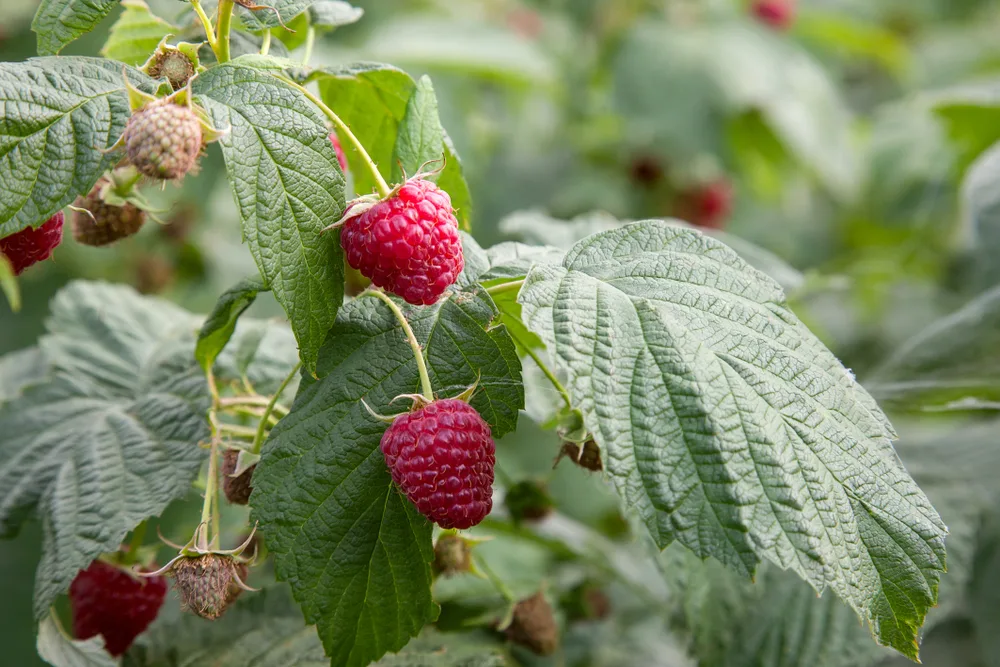
The first berry that comes to mind? Raspberries it is for me.
Every summer we enjoy preserving raspberry syrup with honey and mouthwateringly delicious raspberry jam.
For you, it may be blackberries, huckleberries, blueberries or salmonberries. And what about currants, gooseberries, tayberries lingonberries, honeyberries and strawberries?
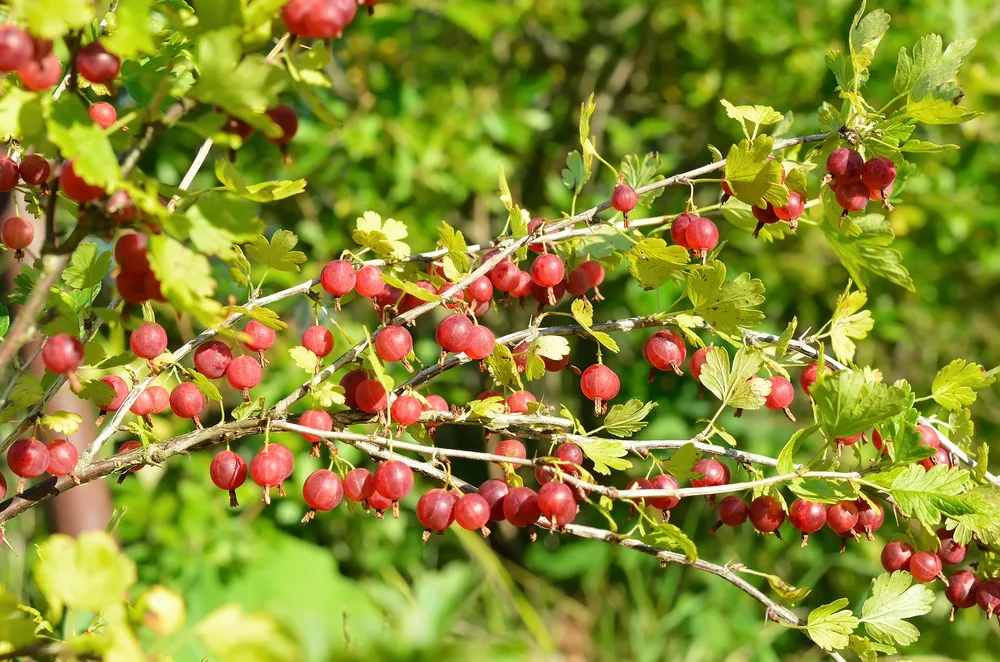
The best time to plant berries, and fruit trees, is autumn. The cooler temperatures of fall and the still warm soil allows roots to take hold before the soil freezes, giving the new transplants a solid footing before going dormant. This, in turn, prepares your fall-planted plants for leaf production in spring – and, of course, a bountiful summer berry harvest.
So, take time to decide which fruits are your favorites and get ready to purchase, or dig up and transplant some canes.
Related reading:
How To Start New Raspberry Canes For A High Yielding Berry Patch
How to Prune Raspberries for a Bumper Harvest Year After Year
10. Fruit and nut trees – Prunus, Malus, Pyrus, Juglans, Corylus spp.
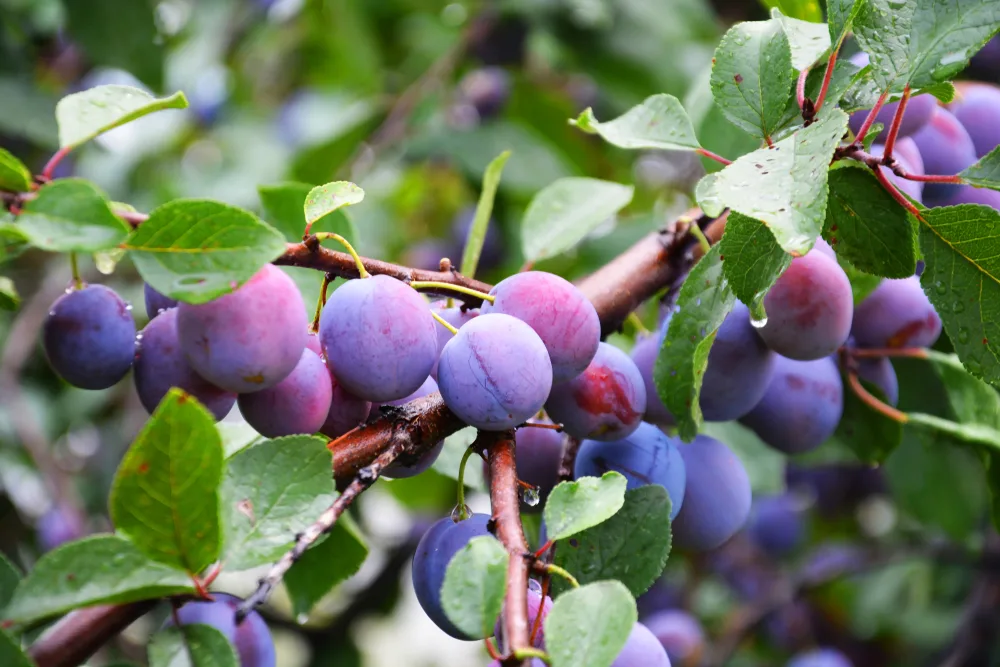
Everyone loves some type of fruit or nut above all the rest, though modernity has made it all too easy to eat our favorites that are grown thousands of miles away.
If you would like to eat more locally, the best you can get is from your backyard, guaranteed. Even if your fruit is misshapen, or slightly awkward, it will still taste great, because you grew it.
The trick here is in choosing the fruit or nut varieties that are right for your soil and amount of sun/shade.
Hazelnuts, for example, can be started from seeds in fall, or by propagating suckers or runners, they can even be grown from nursery-selected transplants.
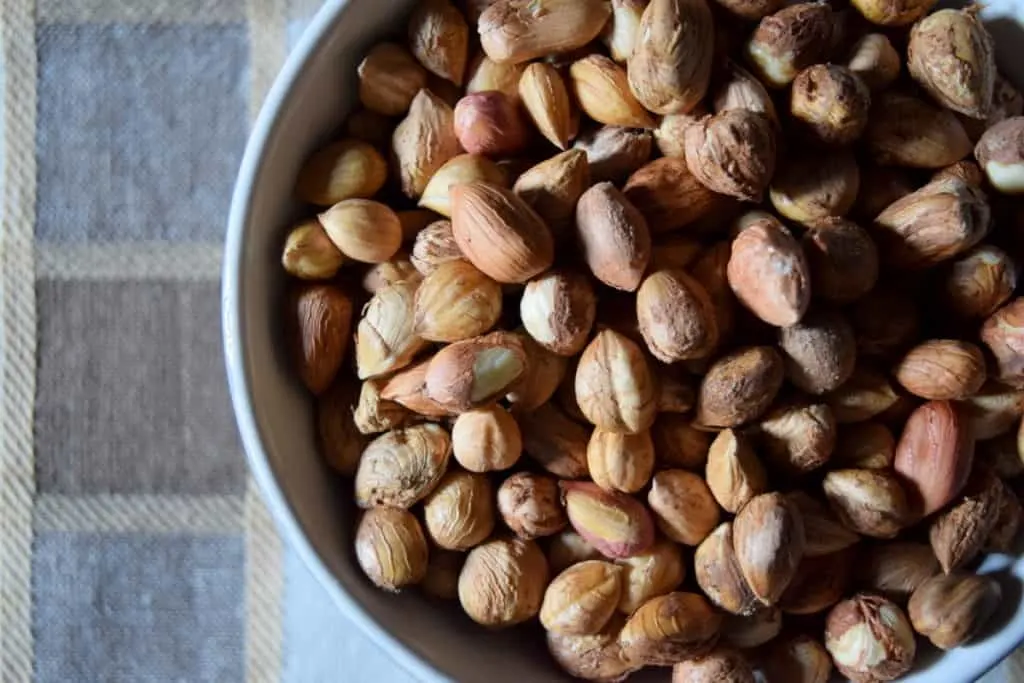
By now, the list of edible perennials to plant in fall is growing in number (many of which can also be planted in early spring, if you miss the fall planting window), far past 10 if you include all the berries, along with the fruit and nut trees below:
- apples
- plums
- cherries
- sour cherries
- quince
- medlar
- pear
- mulberry
- apricot
- walnut
- hazelnut
With so many plants to choose from, it can be overwhelming!
For starters, consider what fruits and nuts you appreciate the most. Think about how to preserve any excess harvest outside of fresh eating.
Would you be able to sell any to make a side income?
Do you have the space for more perennials?
In any case, it is always fun to daydream about an ever-growing perennial garden, here are 11 tips for successful fall planting of trees.
Sun or shade?
Before planting anything in the garden (annuals, biennials or perennials), it is wise to know just what kind of conditions your plants will be growing in.
Soil quality is one factor to consider. However, this can be partially modified over time with soil amendments, fertilizers and compost.
With regards to brightness and heat from the sun, you either have it in your backyard, or you don’t.
If you don’t have a sunny patch, here is a list of 26 vegetables to grow in the shade. With the exception of horseradish, they are mainly annuals.
Why not add some edible shade-tolerant/-loving perennials to your garden, such as:
- chives
- hostas (can be planted in spring or fall!)
- mint
- strawberries (some varieties do well in partial shade – at least 6 hours of sunlight per day)
- blueberries (tolerate partial shade)
- ramsons (wild garlic)
- horseradish
- elderberry
- Good King Henry
- Oregon grape
- watercress
While many of these shade-loving perennials are planted in spring (outside the berries), now is always a good time to start thinking about incorporating them into your garden.
The big question is: do you need more land to fulfill your perennial dreams?

Get the famous Rural Sprout newsletter delivered to your inbox.
Including Sunday musings from our editor, Tracey, as well as “What’s Up Wednesday” our roundup of what’s in season and new article updates and alerts.

